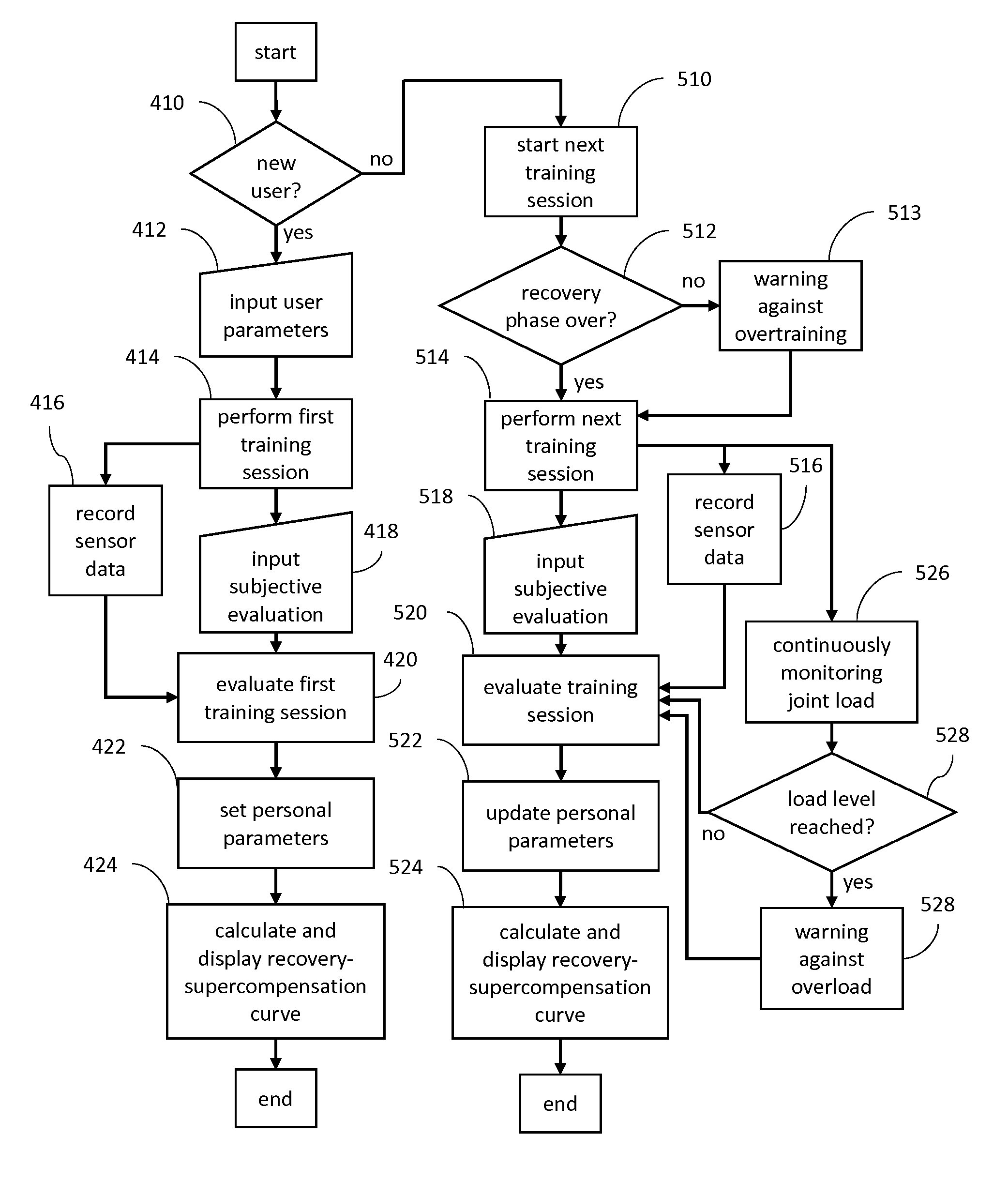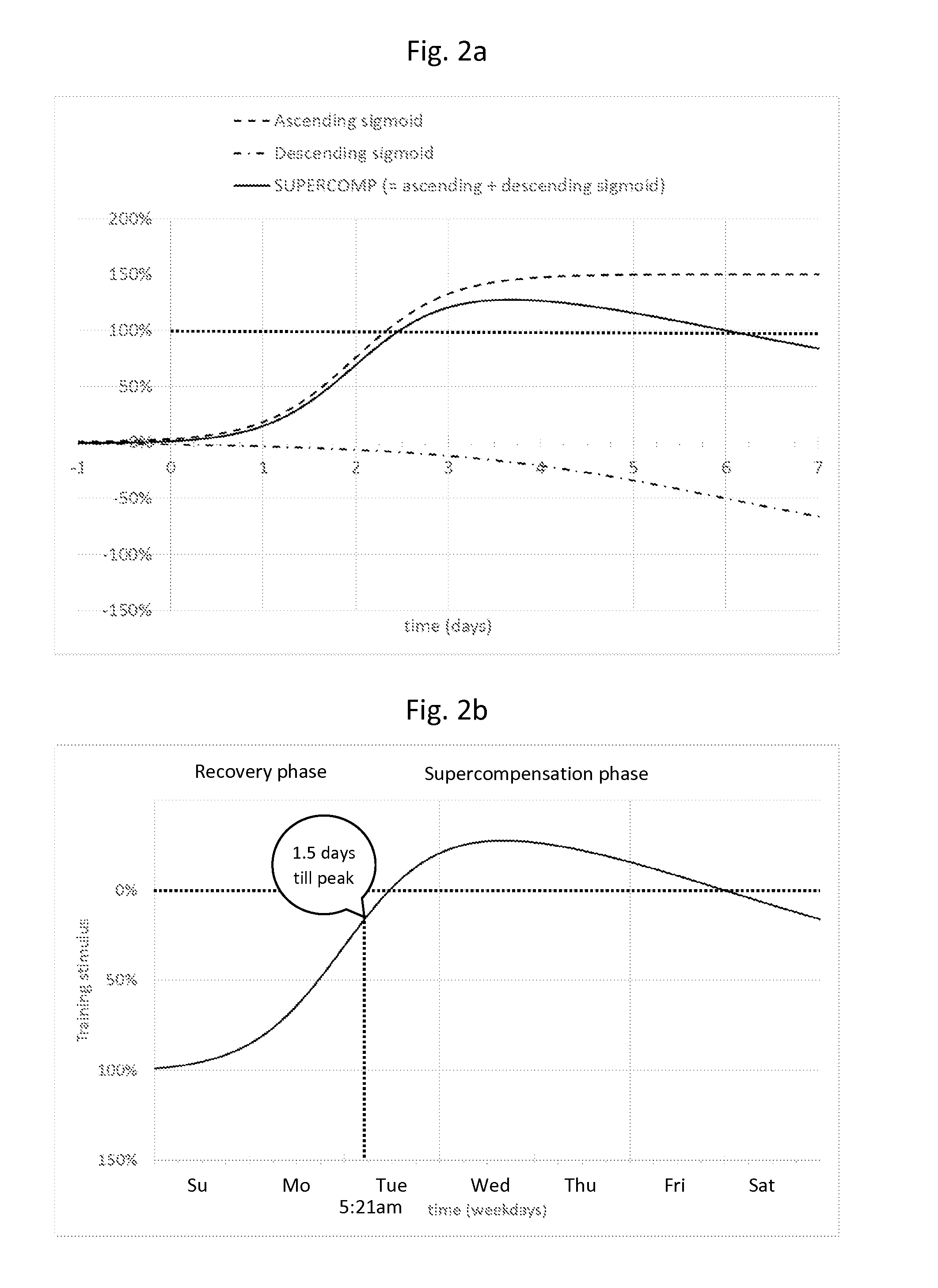Training device for determining timing of next training session
a training device and timing technology, applied in the direction of computer-aided treatment prescription/delivery, physical therapy and activities, gymnastics exercise, etc., can solve the problem of limited accuracy
- Summary
- Abstract
- Description
- Claims
- Application Information
AI Technical Summary
Benefits of technology
Problems solved by technology
Method used
Image
Examples
Embodiment Construction
[0048]The inventors of the present invention have provided a device for modeling a recovery-supercompensation curve (hereafter referred to as SUPERCOMP), which includes the recovery phase, supercompensation phase, and loss of supercompensation phase, i.e., phases b to d in FIG. 1a. The training load phase, i.e., phase a in FIG. 1a, is typically on a much shorter time scale and is not of interest for the purpose of guiding the athlete in the recovery and supercompensation training. In a preferred embodiment, the SUPERCOMP curve is a combination of at least two curves, an ascending s-shaped curve (sigmoid) and a second descending s-shaped curve (sigmoid) which is longer in scale and less pronounced in amplitude, as exemplified in FIG. 2a. S-shaped, or sigmoid, curves are often used in biology representing growth and saturation effects. If growth of N over time t is dN / dt=rN*(K−N) / K, with r being the growth rate and K the carrying capacity, the solution is the sigmoid function N=K / (1+e...
PUM
 Login to View More
Login to View More Abstract
Description
Claims
Application Information
 Login to View More
Login to View More - R&D
- Intellectual Property
- Life Sciences
- Materials
- Tech Scout
- Unparalleled Data Quality
- Higher Quality Content
- 60% Fewer Hallucinations
Browse by: Latest US Patents, China's latest patents, Technical Efficacy Thesaurus, Application Domain, Technology Topic, Popular Technical Reports.
© 2025 PatSnap. All rights reserved.Legal|Privacy policy|Modern Slavery Act Transparency Statement|Sitemap|About US| Contact US: help@patsnap.com



